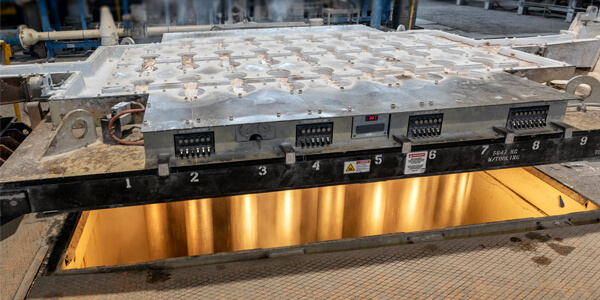
Aluminium is found in many places in everyday life, from beverage cans to airplane parts, automobile components to power lines, and even cooking utensils. But how is powdered aluminium oxide - also known as alumina or Al2O3 - turned into solid aluminium metal?
Alumina starts as bauxite mined from the ground, then is heated with various chemicals and purified to alumina. The yield from bauxite to Al2O3 is roughly 2:1. This powdered Al2O3 is further purified to aluminium, with another yield of roughly 2:1, so each pound of aluminium metal starts with four pounds of bauxite.
The Hall-Heroult process is utilised to transform the powdered Al2O3 into Al metal. It uses a carbon-lined steel vat to hold the alumina and cryolite (Na3AlF6), while carbon electrode rods are placed above the vat, which is heated to just under 1,000°C. This melts the cryolite, which in turn dissolves the alumina. Finally, an electric current is set up between the carbon vat lining and the upper electrodes - causing the Al2O3 to break apart, and the molten Al to collect at the bottom of the vat. The Al metal collected at this stage is typically 99.8% pure, and will require further processing to be employed in the various alloys we use today.

Every stage of the entire process requires quality control: the incoming bauxite is screened for compositional analysis, the red mud by-product is screened for environmental compliance with the effluent, while the alumina powder is screened for purity, which helps to ensure that the process is complete. The smelting process also has a series of checkpoints, with the incoming alumina and cryolite screened for purity, as well as the final metal. Even the steel vat, the carbon lining of the vat, and the electrodes above them will have been checked at some point in their life cycle.
At the end of this life cycle, all of these materials will hopefully be recycled, which in turn introduces a whole new set of checkpoints. All of these checkpoints are opportunities for reference materials to be used - with powdered geological materials, liquid ICP standards, and metal standards all having a role. LGC Industrial offers many of these materials already, and we are currently developing our own line of powdered geological materials which will be released in the coming year. Until then, browse our existing product catalogues to find the reference materials you require.
Bringing together the experience, know-how, and production capabilities of ARMI, MBH, VHG and Paragon Scientific, LGC Industrial can provide customers with a vast range of quality reference standards – for metals, fuel analysis, oil conditioning monitoring, and more.
Why not view our complete range of metal reference materials by downloading our catalogue or contact us to request a quote.
|
